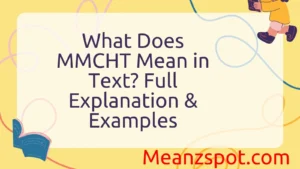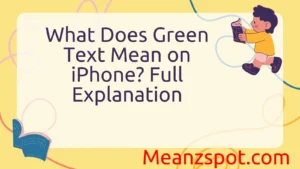Ever received a message like “What’s up, B?” or “Love you, B” and felt confused? You’re not alone. The slang “B” in texts has exploded across platforms like TikTok, Snapchat, and Instagram DMs — and its meaning isn’t always obvious. While it might seem like just a random letter, “B” carries different meanings depending on who’s saying it, how it’s said, and where it’s used.
In today’s fast-paced world of Gen Z lingo and internet slang, keeping up can feel like decoding a secret language. But don’t worry — this guide breaks down exactly what it means when someone calls you “B.” From Brooklyn roots to bestie vibes and even romantic tones, you’ll get the full scoop on this trending term.
Definitions & Meaning
The letter “b” in texting and online communication carries different meanings depending on context. Primarily, it serves as a shorthand or slang term that can represent:
- “Be”: The simplest and most direct use. For example, “b safe” means “be safe.”
- A term of endearment or respect: On social media, especially in hip-hop culture, “b” is often used as a friendly nickname similar to “bro,” “bae,” or “bestie.” It can signal camaraderie, affection, or admiration.
- “Bitch” (softened): Sometimes, people use “b” as a euphemism or softened version of the word “bitch,” especially in casual or playful contexts, removing some of the harshness associated with the full term.
- Emoji substitution: In some online communities, “b” replaces the letter “b” in words to create playful or coded language, such as in memes or stylized writing.
Due to these varied meanings, the exact definition depends largely on tone, relationship between speakers, and platform norms.
Origins & History
The shorthand “b” stems from the natural linguistic desire to simplify communication, especially in fast-paced environments like texting or Twitter, where character limits or typing speed matter. Its roots can be traced to several sources:
- Texting and SMS shorthand: Early mobile phone users often shortened words for efficiency, turning “be” into “b.”
- Hip-hop and rap culture: In the 2010s, influential artists and fans popularized using “b” as a term of endearment or respect. It became common in lyrics and social media posts as a casual, cool way to refer to friends or fans.
- Internet meme culture: The letter “b” was adopted in meme communities for humorous effects, such as replacing the letter “b” in words with the “🅱️” emoji to add a layer of irony or emphasis.
The evolution of “b” reflects broader trends in language adaptation online, where brevity, creativity, and identity expression merge.
Usage in Different Contexts
Social Media
On platforms like Twitter, Instagram, and TikTok, “b” is widely used among younger generations. For instance, a post might say, “What’s up, b?” meaning “What’s up, bro/babe/friend?” This usage conveys casual familiarity and friendliness.
Professional Communication
In formal or professional settings, “b” is less common and generally avoided. Using “b” instead of “be” can come across as unprofessional or too informal unless the environment explicitly supports such casual language.
Pop Culture
The term appears in music lyrics, memes, and videos, often as a stylistic choice. In rap music, for example, artists use “b” to address their peers or audience. Meme culture amplifies its playful and ironic uses, creating a wide range of meanings.
Texting and Messaging
In everyday texting, people use “b” primarily to save time and effort. A text like “b there soon” simply means “be there soon.” Its meaning here is straightforward and context-dependent.
Common Misunderstandings & Clarifications
Because “b” has multiple meanings, misunderstandings can easily occur. For example:
- Confusing respect with insult: While “b” can be affectionate, some may interpret it as offensive if used without context, especially if taken as shorthand for “bitch.”
- Unclear meaning for outsiders: Older generations or those unfamiliar with internet slang might not understand “b,” leading to confusion.
- Overuse leading to ambiguity: When used excessively or without clear tone, “b” can make messages unclear.
To avoid confusion, it’s important to consider the relationship with the recipient and the platform’s culture before using “b.”
Alternatives & Synonyms
Depending on the intended meaning, several alternatives to “b” exist:
- Instead of “b” meaning “be,” simply spelling out the full word “be” is clearer.
- For terms of endearment or friendly nicknames, alternatives include “bro,” “bae,” “bestie,” or “fam.”
- Instead of using “b” as a euphemism for “bitch,” some prefer “bh” or just avoid slang altogether in more formal contexts.
Choosing the right alternative depends on the setting and audience to maintain clarity and appropriateness.
Frequently Asked Questions (FAQ)
1. Is “b” offensive?
Not necessarily. “B” can be a friendly term, but context matters. It can be offensive if interpreted as a euphemism for a derogatory word.
2. Can I use “b” in professional emails?
Generally, no. It’s better to use full words in professional or formal communications to avoid misunderstandings.
3. Where did “b” come from?
It originated from texting shorthand and was popularized by hip-hop culture and internet memes.
4. Is “b” the same as “bae”?
No, but they are sometimes used similarly as terms of affection or familiarity.
5. How do I know what “b” means in a message?
Consider the context, the sender, and the platform to interpret its intended meaning.
6. Is “b” commonly used worldwide?
Mostly in English-speaking countries, especially among younger generations active on social media.
7. Can “b” replace other words?
Primarily, it replaces “be,” but in playful or meme contexts, it can substitute other words for stylistic effect.
Conclusion
The letter “b” in texting and online communication is a fascinating example of how language evolves in the digital age. It serves multiple roles, from a simple shorthand for “be” to a term of endearment or playful meme element. Understanding its origins, uses, and nuances can help decode messages more accurately and avoid miscommunication.
While “b” enriches casual conversations and social media interactions, it’s important to use it thoughtfully, especially in professional or formal contexts. As digital language continues to grow and shift, small characters like “b” remind us how flexible and creative human communication can be.



